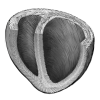Rice University Gets Up to $1 Million to Develop Sensor that Detects Airborne COVID-19

Researchers at Rice University have received funding from DARPA to develop (and demonstrate effectiveness) of a bioaerosol sampling device that can detect very small amounts of SARS-CoV-2 in the air. The team of researchers began working on the concept last summer, and it has evolved into a project that has awarded the group $1 million from DARPA (half of the funding is for development, and the other half is contingent upon the team’s ability to successfully demonstrate the technology).
The collaboration brings together researchers from Rice University’s Brown School of Engineering ad Wiess School of Natural Sciences, and the University of Texas Medical Branch (UTMB) at Galveston. The project, “Real-Time Amperometric Platform Using Molecular Imprinting”, plans for a bioaerosol sampler that will “concentrate airborne SARS-CoV-2 into a liquid electrolyte medium, bind it onto virus-imprinted polymers functionalized with SARS-CoV-2 attachment factors that enhance selectivity and use organic electrochemical transistors to rapidly transduce SARS-CoV-2 binding events into electronic signals.” The team will spend nine months building the device and testing it on inactivated SARS-CoV-2. If the team is successful, they will spend nine more months testing it on the live virus at UTMB.
The system would be designed for use in an office sized at 50 cubic meters, a classroom of 300 cubic meters or for central building monitoring. The researchers hope that it can also capture viruses such that they can be further analyzed.


